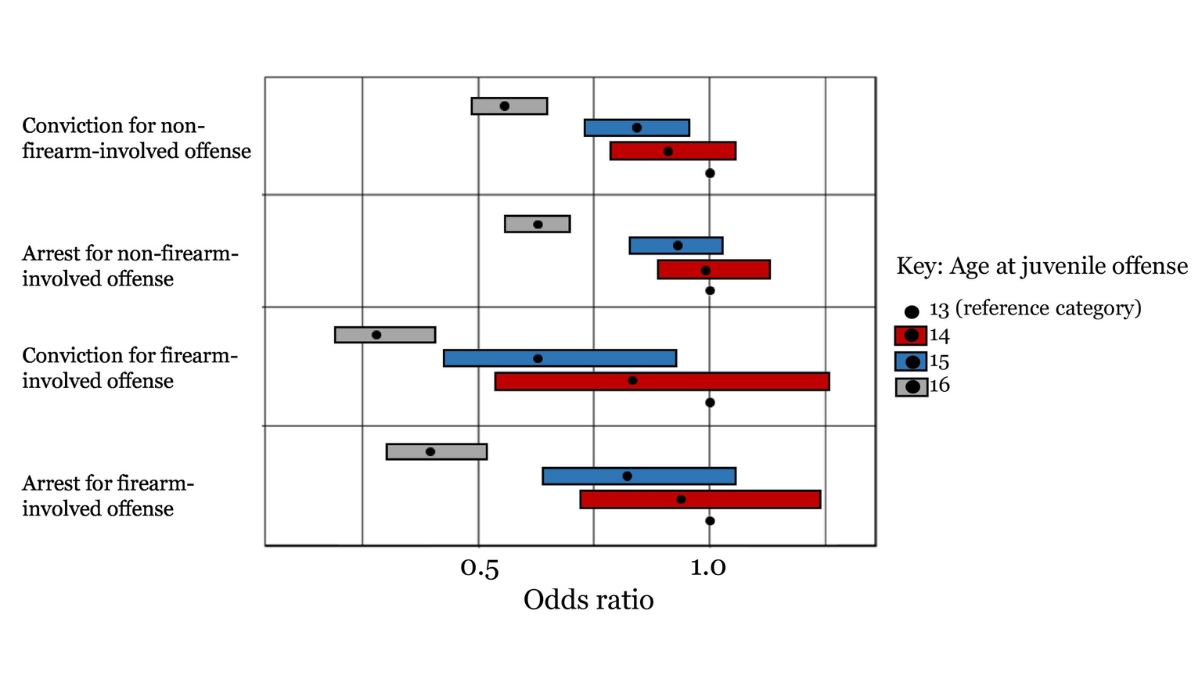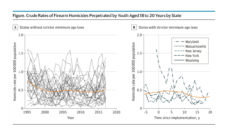Gun violence is rampant in the U.S., especially affecting emerging adults. While 18-20 year olds make up 4% of the U.S. population, they constitute nearly a fifth of all homicide offenders. For many of these late teens, gun violence began at a young age.
Jeffrey Swanson and his team at Duke University studied the effectiveness of gun restrictions for adults in North Carolina with juvenile crime records, noting that increased risk for gun violence begins in early teen years.
A cohort of over 51,000 adults who committed crimes were enrolled across the state of North Carolina, where each individual’s arrests and convictions were linked with their gun-disqualifying and non-disqualifying juvenile records. When younger adults commit more serious offenses, they are more likely to grow up to take part in crimes involving guns. North Carolina is one of twenty-three U.S. states that allow youth to legally access firearms, even after being sentenced for a felony.
In the above graph, criminal outcomes are listed according to age of criminal offense. Youth at age 16 (gray bars) have a significantly lower risk of repeat offense, future arrest, and future conviction than youth at age 13.
Swanson and his team highlight how important early intervention can be in preventing youth from getting their hands on guns as they get older. They cite strategies for interventions that focus on social and developmental drivers of youth violence and crime. Specifically, the presence of more careful background checks and more stringent gun-supplier policies at point of sale serve as a starting point for keeping high-risk youths from more serious criminal outcomes later in life.
Databyte via Jeffrey W. Swanson, Guangyu Tong, Michele M. Easter, et al. Gun violence among young adults with a juvenile crime record in North Carolina: Implications for firearm restrictions based on age and risk. Preventive Medicine, 2022.














